![]() 1st Battalion 22nd Infantry
1st Battalion 22nd Infantry ![]()
The Battle of the Rock
By James Henderson B/1-22, 2nd
Platoon
The decision is made to call in
helicopter gunships. LT Warfield states “It should be noted
that we did not have a Forward Observer (FO) that was trained to
call in artillery, air strikes, etc. So that fell to me”.
Sgt Buenzle manages to crawl forward far enough to lob smoke
grenades as far as he can to mark the enemy positions. While
trying to low crawl through the thick, dense, triple canopy
undergrowth his rifle kept getting hung up on vines. Buenzle
leaves his weapon behind and crawls forward unarmed. Only later
does he realize how vulnerable he had been. God was truly
watching over him, and all of us on that day.
SGT Richard Buenzle, known to all of us as simply, Buenzle, was
one of those rare individuals that seemed to have a real knack
for correctly assessing a given situation and coming to the
correct conclusion and acting on it. His council was often sought
by those higher in command because of his unique decision-making
capabilities. One could safely say that he was always opinionated
and more often than not, correct in his opinion.
LT Warfield noted later “We had a very high triple canopy over us, so when I called in the gunships, they could not see the smoke identifying our position to safely fire on the rock. So, they engaged the area further down the side. I think this explains why we received significant resistance when we reengaged them. If nothing else their backs were against the wall”, so to speak. He added, “With us sitting on a narrow ridge line with steep sides, it was not an easy task. We could only strike the lower side of the rock formation with artillery and gunships.”
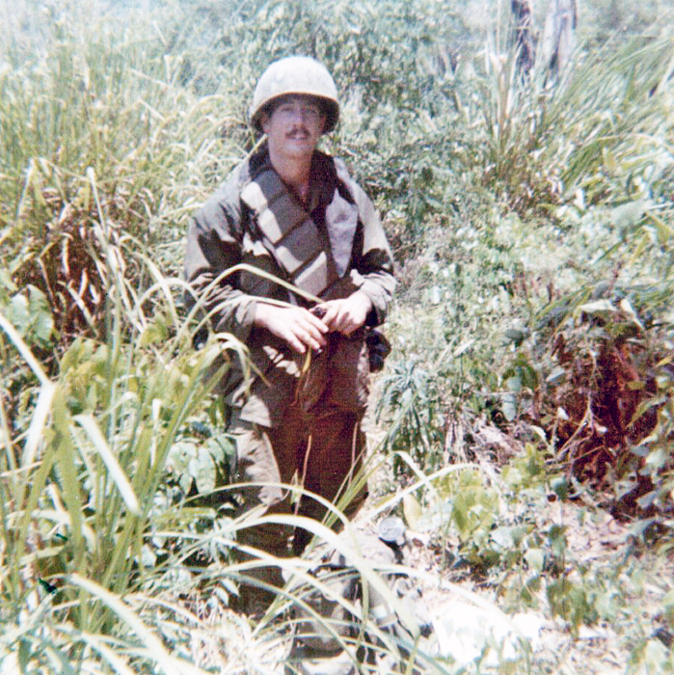
Richard Buenzle
We withdraw once again to the other side of the trail, to the east. At 1045 we have Shamrock 3, Cobras of D Troop 1/10 Cav, on station and providing gun runs.
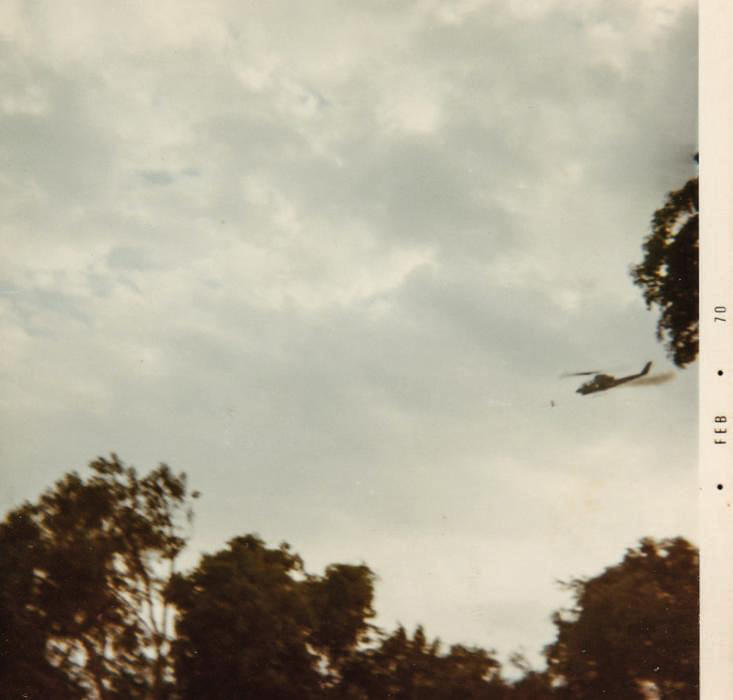
Cobra gunship making a firing run
Photo courtesy of Galen Vercher
All this time Holly has continually hammered at the rock to the extent that his entire gun team is out of ammo and he has burned up the barrel of his M60 machine gun. Sgt Buenzle calls for the other M60 gun team, led by Jimmie “Smoke” Carter, which has been basically pulling rear security a little further down the trail, south of the primary contact area, and out of the main NVA fields of fire, to bring their M60 and all the team’s ammo up the trail to Holly’s position. This is accomplished and Holly begins pounding the Rock again with M60 fire power. Aided now by Smoke Carter and his gun team. Smoke was very experienced with the M60 having served in Jesse Johnson’s gun team for a long period before Jesse DEROS’ed and left the field.
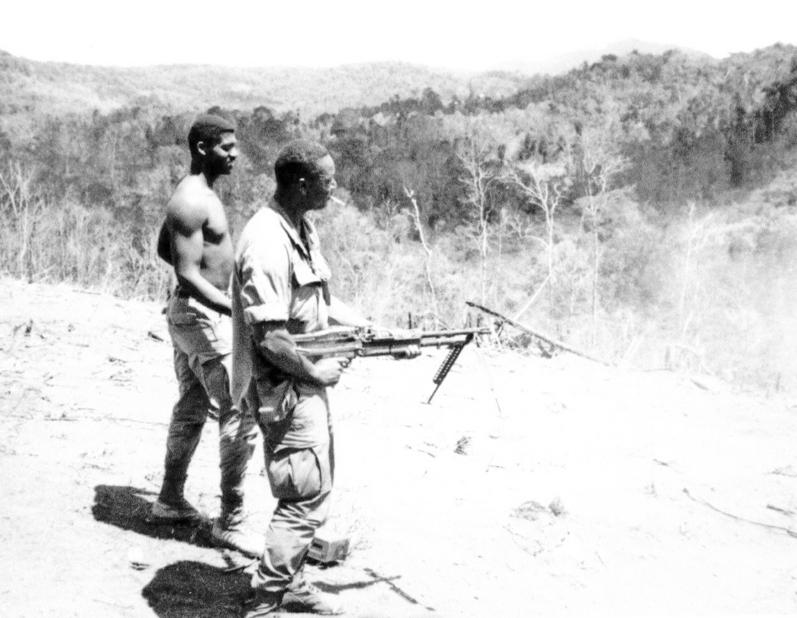
Holly and Smoke at LZ Niagara
The Logs state that from 1105 until 1125 helicopter gunships make numerous gun runs expending their ammunition.
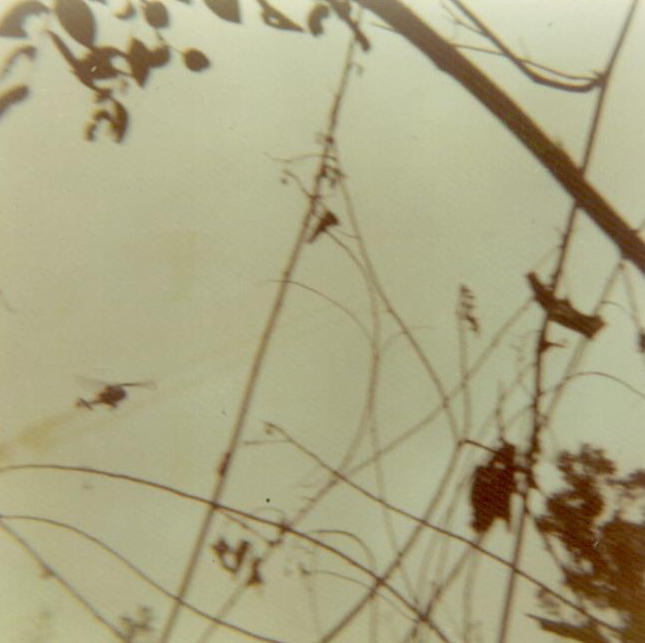
Huey gunship firing rockets
Photo courtesy of Bill Hodder
At 1140 Cider 14, Forward Air Controllers (FAC’s), out of Camp Radcliff at An Khe, is on station and prepared to direct fast movers, close air support jet fighters, to perform strafing runs on the Rock. FAC’s were small, slow and low flying, prop driven aircraft, often time Cessna’s. Their mission was to be a go between to insure there was no confusion on where the jet should apply his ordinance, be it cannon fire or bombs. They flew in low, slow circles which could at times be very hazardous. I remember at the time, and even now, thinking that they had to be either the bravest men in the world or the most foolish, putt-putt-putting around in one of those unarmed small planes while the gooks took pot shots at them! It was them who marked the exact spot for the jet to expend his ordinance without having a friendly fire incident and hitting the troops on the ground. We did not talk directly to the jets, we talked to the FAC’s and they in turn talked to the jets. We pulled back well to the east side of the trail once more, and the jets come screaming in at tree top level firing their 20mm cannons. The sound was deafening as they passed so close overhead and their expended brass shell casings came raining down through the thick jungle canopy, still smoking hot. None of us had ever been so close to anything of that nature. Up until that point we had placed our ruck sacks in front of us as some form of cover, as a cowboy would place his saddle in front of him for cover in an old western movie. After the first strafing run, we placed our ruck sacks on top of us to protect us from the smoking hot brass! I don’t recall how many strafing runs the fast movers made, but at least two. While on the one hand this was frightening, on the other hand it was comforting to experience such an awesome support for one’s efforts. I cannot imagine what it would be like to be on the receiving end.
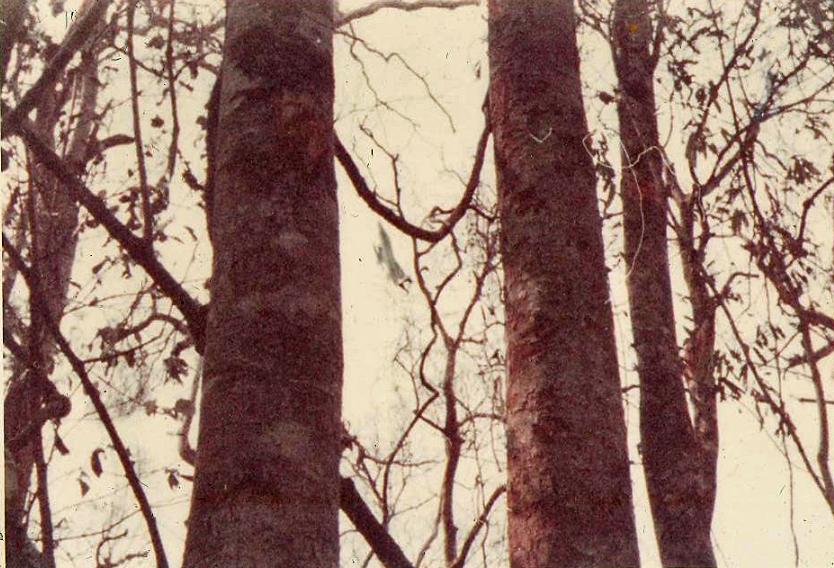
As seen through the trees, a jet fighter-bomber zooms overhead on a bombing run
Photo courtesy of Woody Trissel
At 1220, in the valley floor, 3rd platoon has captured an NVA POW detainee.
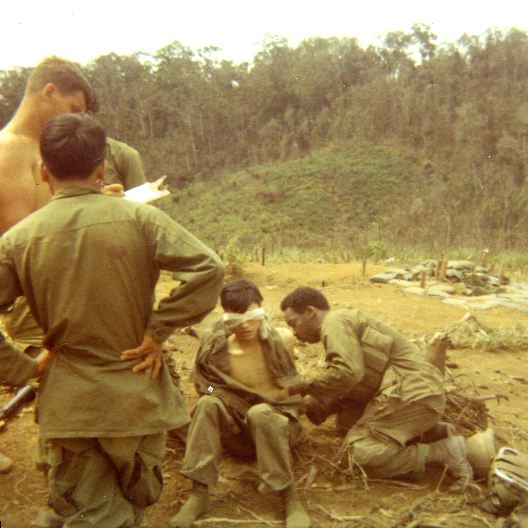
Captured NVA soldier from the Battle of the Rock at FSB Niagara
Photo courtesy of Tom Buhrkuhl
After the artillery fire missions,
the helicopter gun runs and the strafing runs by the fast mover,
we come back from over the eastern military crest/ridge line of
the mountain and attempt to regain our original positions,
roughly where the trail ran up the ridge line to the summit of
the mountain. We make it a little further and what with so much
vegetation now being blown away, because of all the small arms
fire, from both us and them, and the artillery fire missions and
helicopter gunships and strafing, we are for the first time able
to halfway make out the rock formation that the NVA are ensconced
in, and what would later be simply referred to as The Rock. Up
until this time the jungle was so thick that we really
didn’t have a clear idea of what we were up against. In
actuality, it was a gigantic collection of boulders that had
seemingly been dropped there by mother nature. These boulders
ranged in size from roughly the size of a VW beetle up to a large
school bus, maybe bigger. In the places where they lay, but
didn’t touch, they formed what might be termed
“caves”, but actually they weren’t caves at all,
perhaps “cubby holes” would be a more apt description,
perfect places to make a last stand. Places where one determined
soldier could hold off against overwhelming odds. And hold off
they did. As we would attempt to get closer to the Rock, these
holdouts would open fire on us and we would be driven back. The
entire “rock” formation varied in height from perhaps
6-8 feet to 20-30 feet. In length it ran 200 feet down the west
flank, or slope, of the mountain. Perhaps 100 feet wide, I
suppose it could be viewed as a mini mountain on the side of an
actual mountain, or an outcrop or crag.
SGT Buenzle later stated “…we realized that the NVA
were situated in a large rock formation which due to its height,
dominated our position on the trail. Through effective small arms
fire we kept the enemy from positioning themselves on the top
part of the rock formation and thus denied them a position from
which they could bring fire on our position.” He added
“the NVA were imbedded in some very strong positions, which
allowed them some fields of fire which we could not suppress, but
which they also could not move from.”
It has now become apparent that this is an actual battle and not
simply a firefight. The typical firefight, or contact, in Vietnam
generally consisted of them sneaking up on us or us sneaking up
on them and a fast and furious exchange of gun fire after which
they would break it off and disappear back into the jungle. I
would estimate the common firefight to last anywhere from 30
seconds to two minutes with mostly wild chaotic gunfire on both
sides. Unless perhaps they were in a prepared defensive position
such as being in fighting bunkers with overhead protection and
then they might stick around for 5 or 10 minutes until we could
get the artillery zeroed in and then they would simply disappear.
At 1450, we pulled back and called in helicopter gunships one
more time. This time when we came back, the resistance
wasn’t as fierce as before, but it was there none the less.
We were still unable to fully close on the Rock. Once again,
Holly is nearly out of ammo and has burned up the second M60.
Also at this time the Logs state that Brigade says 4 Black Jack
birds, slicks from Co A 4th Aviation Battalion ( 4th AVN BN), are
enroute to our location. We have ordered more ammo, barrels for
the M60’s etc.
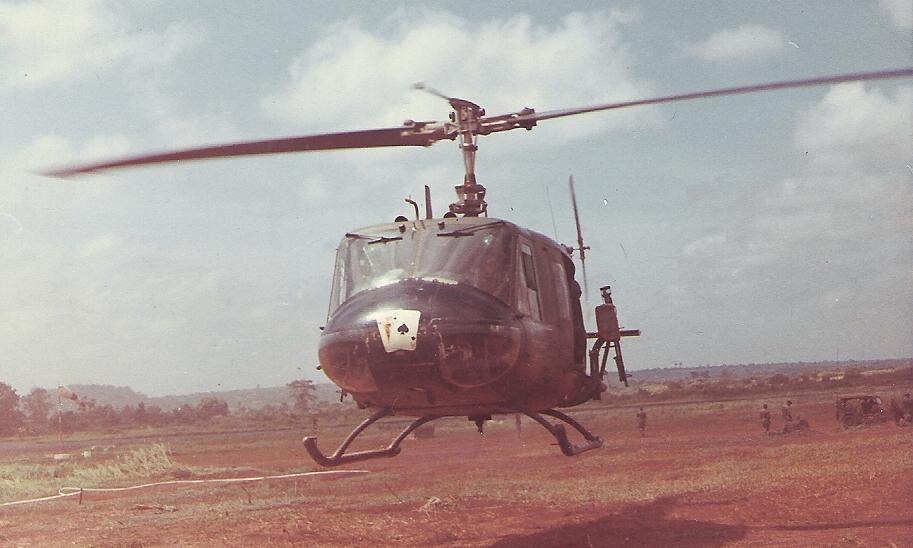
Blackjack helicopter from Company A 4th Aviation Battalion
Photo courtesy of Ronnie Colson
At approximately 1520 CPT
Tijerina, still in the valley floor, has ordered B Company’s
1st Platoon to hurriedly hump up the same trail we had earlier
came up and bring water, M60, M79, M16 ammo and extra M60
barrels. One squad from 1st Platoon, led by SGT Melvin
Rutherford, arrives with the resupply. It’s now
approximately 1600. At this same time in the valley floor 3rd
Platoon is engaged in heavy contact and has reported another NVA
KIA.
SGT Rutherford, unclear on the NVA fields of fire, takes a few
men and attempts to assault the Rock. Once in the NVA fields of
fire he is immediately cut down. PFC Albert Brick, from 2nd
platoon, attempts to get to Rutherford and pull him to safety.
Brick is also severely wounded, shot in the face. Brick is later
awarded a Silver Star as well as a Purple Heart. At this point in
time, PFC Donald Gary with the assistance of the platoon medic
are able to pull Brick back to relative safety, out of the NVA
fields of fire, and to a point where the medic can administer
aid. They are unable to get to SGT Rutherford. Both Al Brick and
Don Gary are members of SGT Joseph “Cat” Akczinski
rifle squad. They are good and reliable troopers and steady in a
crisis. Cat, who is on the scene, is a bold and aggressive squad
leader and is also awarded a Silver Star for his actions that
day. SGT Rutherford is too far into the NVA fields of fire to
recover him. The S-3 Logs record the time of this occurrence as
1620 and report “heavy resistance at this time”.
Fifteen minutes later they record “urgent Dust Off (Medivac)
requested. This would have been for Al Brick. The Logs report
contact as “heavy” at 1700.

Left, Joseph Akczinski - right, Albert Brick
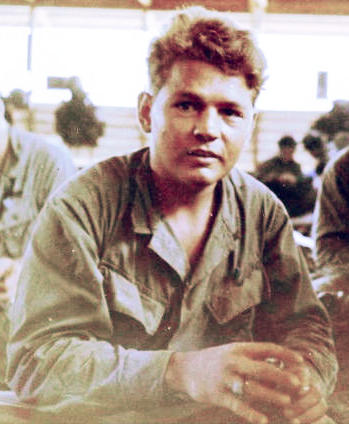
Donald Gary, base camp standdown shortly before the Battle of the Rock
Photo courtesy of Dave Brown
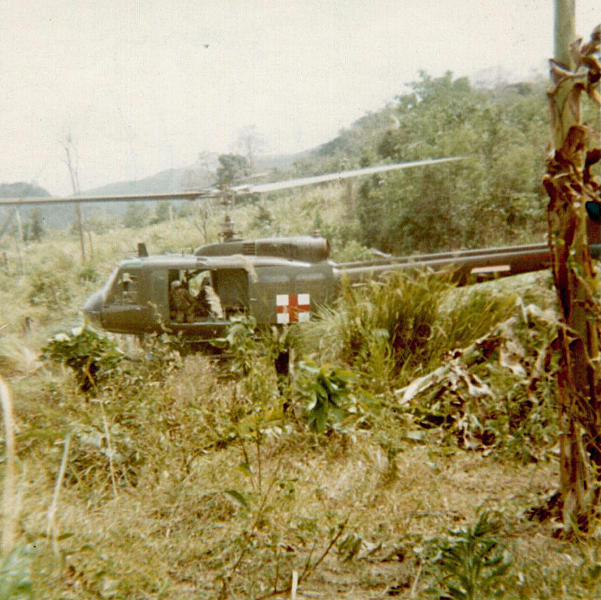
Dust Off touched down
Above: Albert Brick Photo courtesy of Albert Brick |
Above: Melvin Rutherford Photo courtesy of Jim Bacorn |
When CPT Tijerina, with 3rd platoon on the valley floor, learns of the inability of 2nd platoon to recover SGT Rutherford, he and his RTO, Dan Bartow, catch a ride on a resupply chopper in the valley floor and come to the LZ at the top of the mountain, very near to the Rock’s location. He stated later “The fighting had settled into a dangerous rhythm of push and pull.” Once on site, and after being briefed on the situation, CPT Tijerina lays forth a plan to recover SGT Rutherford.
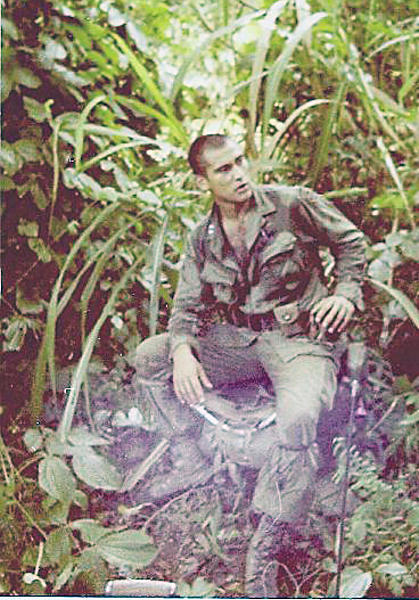
Captain Gilbert Tijerina
Photo courtesy of Jim Bacorn
CPT Tijerina was the type of
leader who believed whole heartedly in the old adage of
“leading from the front”. He would never ask one of his
men to do something that he himself would not do. He was a West
Point graduate and a firm believer in the West Point motto of
Duty, Honor, Country. We usually referred to him as Cap’n
TJ, or even simply as TJ. He was brave and honorable to a fault.
He was very much respected and admired by the men.
After having thrown several smoke grenades between the Rock and
where SGT Rutherford lay, SGT Buenzle with his M16 and myself
with my M79 fire a constant barrage over CPT TJ’s head, the
Captain low crawls to SGT Rutherford, confirms that he is KIA and
drags his body out of the NVA fields of fire. CPT Tijerina is
later awarded a Silver Star for his actions that day in
recovering SGT Rutherford’s body.
Later he remarked “The fact that 2nd Platoon held together
in this moment of crisis and rose to this insurmountable
challenge was almost unbelievable.” Adding, “throughout
the daylight battle, the 2nd Platoon maintained control and asked
only for water and ammunition.”
By now it’s approximately 1810.
Sunset this time of year is approximately 1820, fully dark by
1850.
Al Brick’s Dust Off came on station at 1710 and was
completed at 1800, by which time dusk is fast approaching.
At 1815 another dust off is requested and by 1915 SGT Rutherford
is also dusted off.
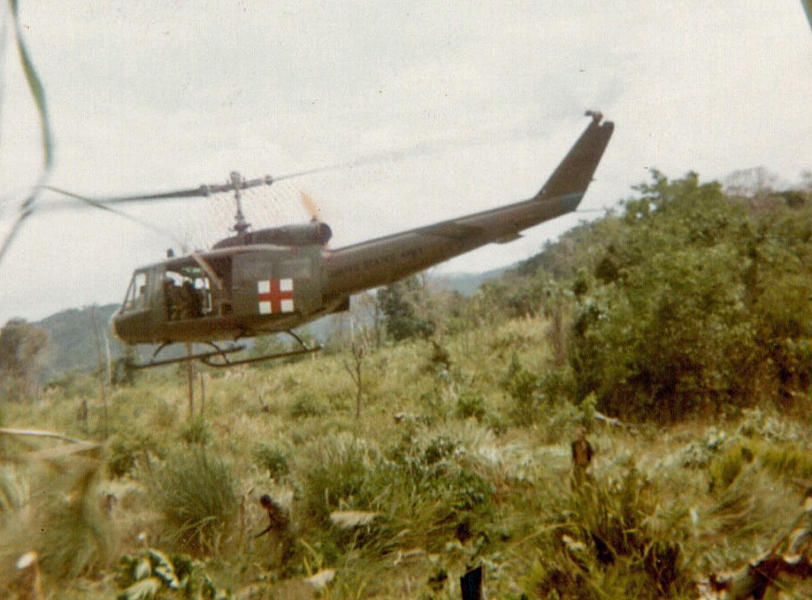
Dust Off helicopter lifting off
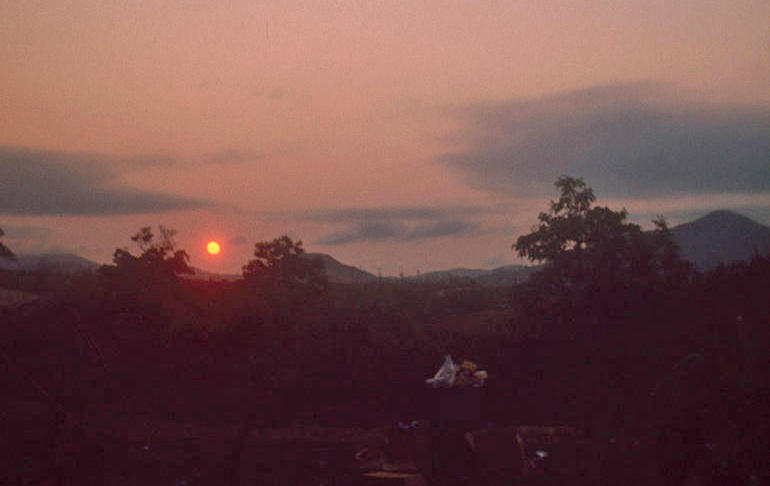
Sunset in the Central Highlands
Photo courtesy of Charles Chill
By the time both Dust Offs have
been completed, it is now fully dark and 2nd Platoon has formed a
night defensive perimeter of sorts. Basically, we set up in place
where we are on the trail, bringing our two rear guard squads up
and positioning them to cover our back and rear. Holly positions
his gun team facing directly at the rock, basically where he has
been all day although further up the trail and nearer the top of
the mountain. We position my rifle squad immediately to
Holly’s left, basically facing straight down the trail.
Cat’s squad is set up to Holly’s right and more or less
also facing the rock. Smoke’s gun team sets up facing in the
opposite direction from Holly. We do not dig in but rather stay
on 100% alert, no sleep tonight for anyone.
At 2045 it is now totally dark but there is a nearly continuous,
eerie light from parachute flares and/or spotlights from the
Spookys. We are reporting lots of movement at the Rock
accompanied by flashlights and Vietnamese voices. Again,
artillery is called in to continue the pounding.
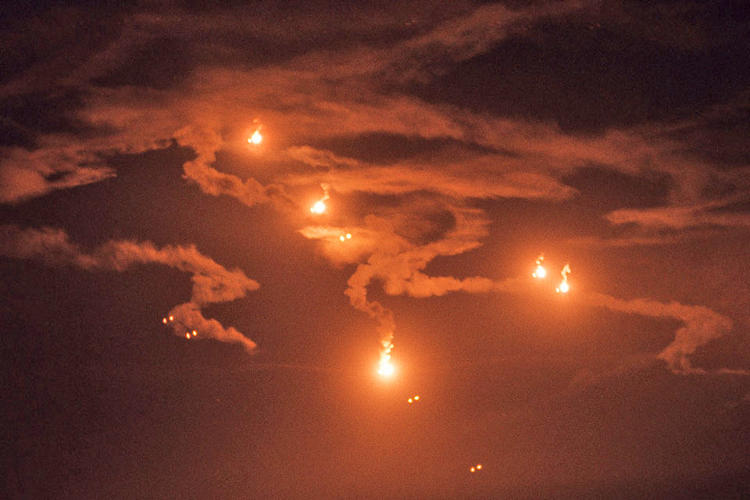
Parachute flares
It is my personal opinion that
some of the NVA that had fled the fighting at the rock during the
day, returned that night to police up their dead and wounded and
to recover whatever weapons and equipment that they could. I
think that was the source of the flashlights and the voices. In
hindsight, I don’t think they were there to fight, and
somewhat oddly, they didn’t seem to be trying to
particularly hide from us. While we fired on them, I do not
recall whether they fired back. I don’t remember, maybe yes,
maybe no.
Meanwhile, down in the valley floor at 2125, 3rd Platoon has two
trip flares go off and they employ three claymore mines. Results
are another NVA KIA. At the same time, Shadow 45 is slowly
circling and shining powerful search lights on the entire area.
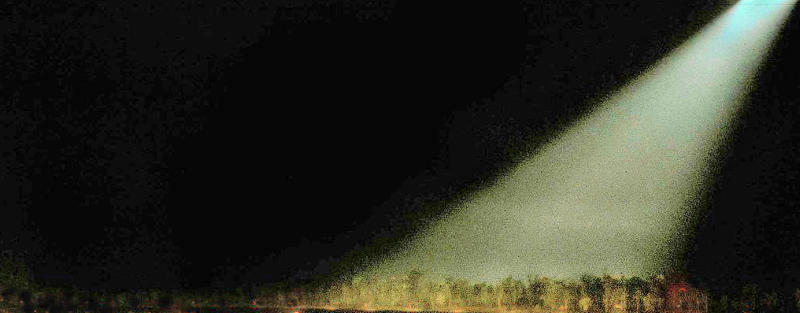
Search light from AC-119 lighting up the jungle
Logs show that at 2130 Shadow 45, an AC119G gunship, has expended his ammunition in support of Bravo Company. To the grunt in the field, these aircraft were referred to as either Spooky or Puff the Magic Dragon. At various times during the Vietnam War they were C47’s and/or C130’s and later AC119’s, I believe these were AC119G’s. They went by call signs either Shadow and/or Stinger. To watch this magnificent aircraft with its side firing mini guns, two per side, firing 12,000 rounds per minute was a sight to behold. We had seen these type gun runs only from a far distance and to see one up close and in support of ourselves was awesome. Once the pilot had his coordinates locked in, he would put the aircraft into an incredibly tight turn, tipping one wing down towards the ground and seeming to “pivot” in a tight circle in one spot, more or less, with the aircraft on its side, in what’s called a pylon turn. They flew low, around 3,500 feet, and slow in a type of holding pattern, the mini guns firing, every sixth round being a tracer round, so rapidly that the five rounds in between tracers did not seem to exist, it appeared to be a continuous stream of tracers! It looked like a fiery water hose, hosing down the enemy! The sound does not even resemble gunfire, rather it sounds somewhat like a Bronx cheer or someone doing a raspberry. If a person has never witnessed or experienced this, it’s very hard to describe. But, to experience this awesome display of fire power in your own support is the most comforting of sounds and sights.
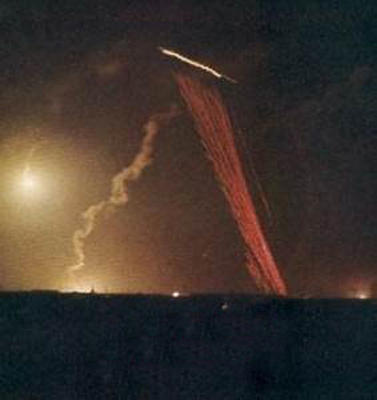
Fixed wing gunship firing at night
Photo from History.net
Home | Photos | Battles & History | Current |
Rosters & Reports | Medal of Honor | Killed
in Action |
Personnel Locator | Commanders | Station
List | Campaigns |
Honors | Insignia & Memorabilia | 4-42
Artillery | Taps |
What's New | Editorial | Links |